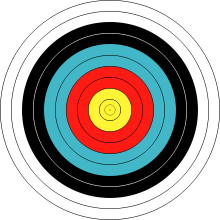Supporting Open Annotation by Gerben.
From the post:
In its mission to connect the world’s knowledge and thoughts, the solution Hypothes.is pursues is a web-wide mechanism to create, share and discover annotations. One of our principal steps towards this end is providing a browser add-on that works with our annotation server, enabling people to read others’ annotations on any web page they visit, and to publish their own annotations for others to see.
I spent my summer interning at Hypothes.is to work towards a longer term goal, taking annotation sharing to the next level: an open, decentralised approach. In this post I will describe how such an approach could work, how standardisation efforts are taking off to get us there, and how we are involved in making this happen – the first step being support for the preliminary Open Annotation data model.
An annotation ecosystem
While we are glad to provide a service enabling people to create and share annotations on the web, we by no means want to become the sole annotation service provider, as this would imply creating a monopoly position and a single point of failure. Rather, we encourage anyone to build annotation tools and services, possibly using the same code we use. Of course, a problematic consequence of having multiple organisations each running separate systems is that even more information silos emerge on the web, and quite likely the most popular service would obtain a monopoly position after all.
To prevent either fragmentation or monopolisation of the world’s knowledge, we would like an ecosystem to evolve, comprising interoperable annotation services and client implementations. Such an ecosystem would promote freedom of innovation, prevent dependence on a single party, and provide scalability and robustness. It would be like the architecture of the web itself.
…
Not a bad read if you accept the notion that interoperable annotation servers are an acceptable architecture for annotation of web resources.
Me? I would just as soon put:

on my annotation and mail the URL to the CIA, FBI, NSA and any foreign intelligence agencies that I can think of with a copy of my annotaton.
You can believe that government agencies will follow the directives of Congress with regard to spying on United States citizens, but then that was already against the law. Remember the old saying, “Fool me once, shame on you. Fool me twice, shame on me.”? That is applicable to government surveillance.
We need robust annotation mechanisms but not ones that make sitting targets out of our annotations. Local, encrypted annotation mechanisms that can cooperate with other local, encrypted annotation mechanisms would be much more attractive to me.
I first saw this in a tweet by Ivan Herman.

